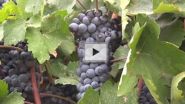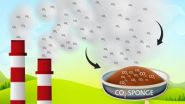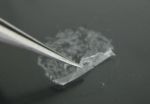(Press-News.org) San Francisco, Aug. 10, 2014 — Location. Location. Location. The popular real estate mantra also
turns out to be equally important for growing wine grapes in fields and storing bottles of the beverage at home or in restaurants, according to researchers.
Those are just two of the topics that will be covered in a symposium titled, "Advances in Wine Research," that will run today through Tuesday at the 248th National Meeting & Exposition of the American Chemical Society (ACS). The meeting features nearly 12,000 reports. A brand-new ACS video on the topics is available at https://www.youtube.com/watch?v=Km3UujrPLEU.
"In this symposium, we will be evaluating components that affect flavor, taste, mouthfeel and also color, as well as sustainable vineyard and winemaking variables that impact the composition of the wine," says symposium organizer Susan E. Ebeler, Ph.D. "The San Francisco location is ideal for this symposium, being located near the heart of the U.S. wine-growing region of Napa Valley. The symposium is expected to draw a high level of interest from local wineries, food industries and government agencies."
One study being presented during the symposium, of which Ebeler is a co-author, finds that it really does matter where the same grapes are grown when it comes to taste and aroma.
The Argentinean Malbecs tended to have more ripe fruit characteristics, sweetness and higher alcohol levels, while those from California were more bitter, and had more artificial fruit and citrus aromas, Ebeler says.
Overall, the study covered the chemical and sensory effects of different regions using 41 research lots of Californian and Argentinean Malbec wines. In addition to having trained panelists evaluate the wines, the team conducted a gas chromatographic analysis of the wine volatiles — mostly those compounds that would be smelled when sniffing the beverage.
Another study in the symposium found dramatic differences in the aging of wine depending on where the bottles were stored. This team placed 400 bottles from 20 different lots of Sangiovese wine for 24 months either in a professional wine cellar with strictly controlled temperature (59-62 degrees Fahrenheit) or in conditions mimicking a dark room in a home (68-80 degrees Fahrenheit) for different seasons.
"We discovered that a relatively small difference in the temperature speeds up several chemical reactions associated with wine aging and even promotes new reactions that are not observed at lower temperatures," says study leader Fulvio Mattivi, who is a researcher at Fondazione Edmund Mach, Research and Innovation Centre, San Michele all'Adige, Italy. "After six months under domestic conditions, the wine in the bottle was approximately as 'old' as a bottle from the same producer and lot stored for two years under cellar conditions. The house-stored wine was aging approximately four times faster!"
When tested, the wine stored in the dark room had fewer healthful antioxidants and less red pigmentation than the cellar versions, making it less flavorful, he reported.
Other topics that will be addressed in the symposium are:
Variance in wine grape quality in the same region
Effects on aroma by adding antioxidants to Sauvignon Blanc at harvest
New insights into how wine stimulates secretion of stomach acids
Influence of the toasting of wood in forming key aroma compounds in wines
INFORMATION:
A press conference on this topic will be held Tuesday, August 12, at 3 p.m. Pacific time in the Moscone Center, North Building. Reporters may report to Room 113 in person, or access live video of the event and ask questions at the ACS Ustream channel
Mattivi's funding was provided by the Italian Ministry of Agricultural, Food and Forestry Policies, under the project Functional Food Quality.
The American Chemical Society is a nonprofit organization chartered by the U.S. Congress. With more than 161,000 members, ACS is the world's largest scientific society and a global leader in providing access to chemistry-related research through its multiple databases, peer-reviewed journals and scientific conferences. Its main offices are in Washington, D.C., and Columbus, Ohio.
To automatically receive news releases from the American Chemical Society, contact newsroom@acs.org.
Note to journalists: Please report that this research is being presented at a meeting of the American Chemical Society.
Follow us: Twitter | Facebook
Susan Ebeler, Ph.D.:
Title
Effect of region on the volatile composition and sensory profiles of Malbec and Cabernet sauvignon wines
Abstract
Regionality, frequently called terroir, is often used as a way to market wines from different locations. However, a great deal of the information on regionality is from the popular press with only a few scientific publications on varieties such as Pinot noir and Riesling. In this presentation we will discuss the chemical and sensory effects of regionality using 30 commercially made Australian Cabernet sauvignon wines as well as 41 research lots of Californian and Argentinean Malbec wines. For the Malbec wines the Argentinean wines tended to have more ripe fruit characteristics, sweetness and higher alcohol levels while the wines from California had more bitter tastes, more artificial fruit and citrus aromas. There were also clear volatile chemical differences among the regions for 48 of the 60 measured compounds using a semi quantitative, automated headspace solid phase micro extraction (HS-SPME) gas chromatography-mass spectrometry (GC–MS) method combined with synchronous Selected Ion Monitoring (SIM). For the Australian Cabernet sauvignon wines we also found that some of the 10 different wine regions (called Geographical Indications or GIs) could be separated based on their sensory attributes. A HS-SPME comprehensive GC-time of flight mass spectrometry (GCxGC-TOFMS) method showed that a number of the over 350 identified compounds were unique for particular GIs and groups of GIs that were close to one another geographically. These studies showed that for both very well controlled research fermentations and for less controlled commercial fermentations it is possible to determine sensory and chemical regional differences for wines.
Fulvio Mattivi:
Title
Influence of storage conditions on the composition of red wines
Abstract
The knowledge of the influence of the temperature on the chemical composition of red wines may be useful, given that unappropriate storage is likely to shorten the shelf life while decreasing the wine quality. The putative markers of ageing of red wines stored for two years with two different storage temperatures (cellar vs. domestic) were investigated via MS-based untargeted metabolomics, and further confirmed by additional metabolite profiling [1].
Among the 10k features extracted from the metabolomic data set, the significant ones capable of distinguishing between the two storage conditions were mostly pigments and other phenolics, several of which were annotated with 1stlevel identification. Tentative identification of the remaining chromatographic peaks, without a standard, was made by using spectral features, literature information about chromatographic properties and mass spectra records from databases (HMDB, Kegg or MassBank) and an internal database for the wine metabolome based on the bibliography.
The results of multivariate analysis clearly showed that wines stored in the cellar changed little even after two years of storage, while wines stored in typical domestic conditions developed approximately four times faster. Ageing in domestic conditions appeared to induce an accelerated decrease in native anthocyanins, while specifically promoting the formation of pinotin A-like pigments. Interestingly, we observed a temperature-dependent pathway involving the addition of bisulfite to the flavanols and leading to the formation of several catechins and proanthocyanidins sulfones, along with hydrolysis reactions involving various phenolics, which could cause some concern about wine stability especially in the case of quercetin.
Wine symposium explores everything you wanted to know about the mighty grape (video)
2014-08-10
ELSE PRESS RELEASES FROM THIS DATE:
Carbon dioxide 'sponge' could ease transition to cleaner energy
2014-08-10
SAN FRANCISCO, Aug. 10, 2014 — A sponge-like plastic that sops up the greenhouse gas carbon dioxide (CO2) might ease our transition away from polluting fossil fuels and toward new energy sources, such as hydrogen. The material — a relative of the plastics used in food containers — could play a role in President Obama's plan to cut CO2 emissions 30 percent by 2030, and could also be integrated into power plant smokestacks in the future.
The report on the material is one of nearly 12,000 presentations at the 248th National Meeting & Exposition of the American Chemical Society ...
On the frontiers of cyborg science
2014-08-10
SAN FRANCISCO, Aug. 10, 2014 — No longer just fantastical fodder for sci-fi buffs, cyborg technology is bringing us tangible progress toward real-life electronic skin, prosthetics and ultraflexible circuits. Now taking this human-machine concept to an unprecedented level, pioneering scientists are working on the seamless marriage between electronics and brain signaling with the potential to transform our understanding of how the brain works — and how to treat its most devastating diseases.
Their presentation is taking place at the 248th National Meeting & Exposition of ...
Like cling wrap, new biomaterial can coat tricky burn wounds and block out infection
2014-08-10
SAN FRANCISCO, Aug. 10, 2014 — Wrapping wound dressings around fingers and toes can be tricky, but for burn victims, guarding them against infection is critical. Today, scientists are reporting the development of novel, ultrathin coatings called nanosheets that can cling to the body's most difficult-to-protect contours and keep bacteria at bay.
The researchers are speaking about their materials, which they've tested on mice, at the 248th National Meeting & Exposition of the American Chemical Society (ACS), the world's largest scientific society.
The meeting features ...
Women who 'lean in' often soon leave engineering careers, study finds
2014-08-09
WASHINGTON –- Nearly 40 percent of women who earn engineering degrees quit the profession or never enter the field, and for those who leave, poor workplace climates and mistreatment by managers and co-workers are common reasons, according to research presented at the American Psychological Association's 122nd Annual Convention.
While women accounted for more than 20 percent of engineering school graduates over the past two decades, only 11 percent of practicing engineers are women, and only 9 percent of electronic and environmental engineers are, said Nadya Fouad, PhD, ...
Happier consumers can lead to healthier environment, research reveals
2014-08-09
WASHINGTON -- The pursuit of true happiness can lead people to lifestyles that will not only be satisfying but will be better for the environment, according to an overview of psychological research presented at the American Psychological Association's 122nd Annual Convention.
"For decades, consumerism has been on a collision course with the environment, with consumer appetites draining the planet of natural resources and accelerating global warming. One view is that we need to change consumption in order to save the planet," said Miriam Tatzel, PhD, of Empire State College. ...
Trauma before enlistment linked to high suicide rates among military personnel, veterans
2014-08-09
WASHINGTON -- High rates of suicide among military service members and veterans may be related to traumatic experiences they had before enlisting, making them more vulnerable to suicidal behavior when coping with combat and multiple deployments, according to the findings of several recent studies presented at the American Psychological Association's 122nd Annual Convention.
Experiencing child abuse, being sexually victimized by someone not in the service and exhibiting suicidal behavior before enlisting are significant risk factors for service members and veterans who ...
Regular marijuana use bad for teens' brains
2014-08-09
WASHINGTON –- Frequent marijuana use can have a significant negative effect on the brains of teenagers and young adults, including cognitive decline, poor attention and memory, and decreased IQ, according to psychologists discussing public health implications of marijuana legalization at the American Psychological Association's 122nd Annual Convention.
"It needs to be emphasized that regular cannabis use, which we consider once a week, is not safe and may result in addiction and neurocognitive damage, especially in youth," said Krista Lisdahl, PhD, director of the brain ...
Individual genotype influences effectiveness of HIV vaccine
2014-08-09
Almost 40 million people worldwide live with HIV/AIDS. Despite great effort, HIV-1 vaccine development has been challenging. A recent HIV vaccine trial, known as RV144, revealed that a combination of 2 vaccines protected some individuals from HIV infection. Individuals in the trial that made antibodies that bound to a specific region of the HIV envelope protein had a decreased risk of HIV infection. A new study in the Journal of Clinical Investigation reveals that an individual's genotype correlates with their ability to develop immunity to HIV in response to vaccination. ...
Improving lymphatic function protects mice from experimental colitis
2014-08-09
Chronic inflammatory bowel disease can be painful and debilitating. Both genetics and environment are thought to promote disease, but it is not fully understood how chronic IBD develops. Emerging evidence indicates that IBD is associated with an increase in lymphatic vasculature, which transports lymph throughput the body. It is not clear if these lymphatic vessels promote or improve IBD. A new study in the Journal of Clinical Investigation indicates that improving lymphatic function relieves experimental IBD in mice. Silvio Danese and colleagues at Humanitas Clinical and ...
Lead linked to obesity in mice exposed by mothers
2014-08-08
ANN ARBOR—When we think of ill effects from lead exposure various neurologic problems usually come to mind. Now researchers at the University of Michigan say another health impact can be added to the list: obesity.
Even at low levels, lead is associated with obesity in mice whose mothers were exposed to the chemical, researchers at the U-M School of Public Health found. Specifically male mice exposed to lead had an 8-10 percent increase in weight.
"The data support the obesogen hypothesis that toxicant exposures in the womb contribute to the higher rate of obesity," ...


